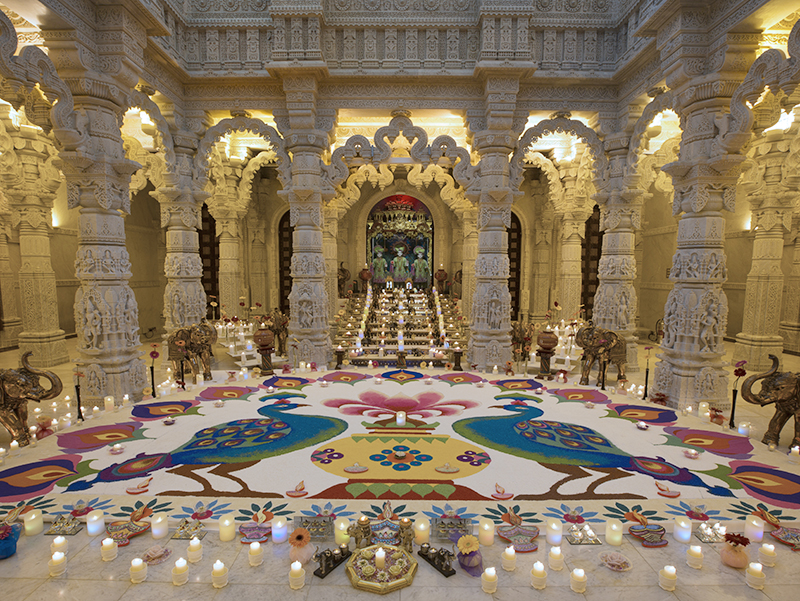Landschlacht, Switzerland, Tuesday 21 May 2019
This Sunday in Switzerland some folks will attend services in either a Reformed Church or a Roman Catholic Church and both groups will call themselves Christian.

And as the Earth spins around the Sun, from the Dark Continent of Africa to the Canadian tundra, Christians will kneel on this day to receive the elements of their own version of the eternal Eucharist as written in the Bible that speaks of how God sent His Son whose sacrifice somehow saved our wretched souls and whose resurrection conquered death for all of us, despite death being our destiny.
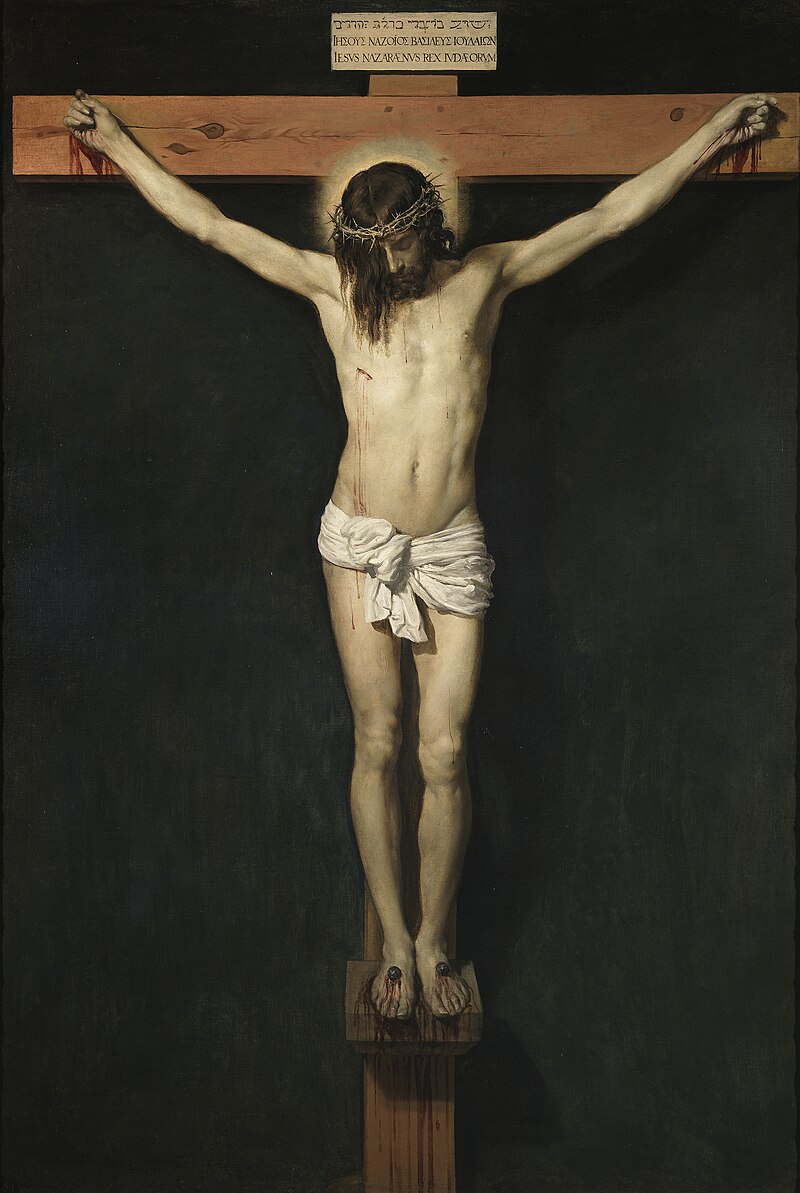
In Jerusalem and parts of the planet where the Great Diaspora has led them over centuries, others, wrapped in the prayer shawls that their ancestors wore in the desert, recite the Torah, as their Rabbi lovingly guides a wand across sacred text that Yahweh spoke to His Chosen People.
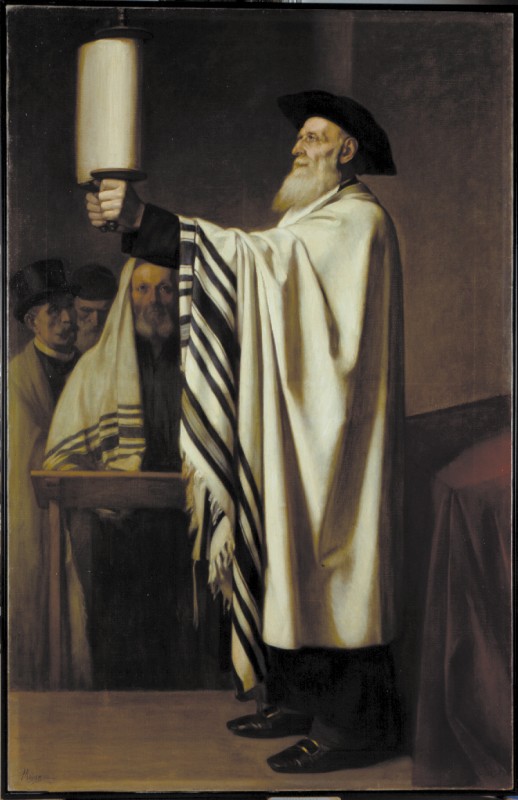
And within the Blue Mosque in Istanbul, and anywhere where the Qu’ran reigns the mind, five times a day, the faithful prostrate themselves towards Mecca, towards Mohammed’s holy city, and show their devotion to Allah, who also remains God the Father of Christianity and Yahweh of the Jews and yet is unrecognizable as the same God of Abraham said to be the originator of all three great religions.

Same deity, different names, different practices, same intolerance too often seen by those who claim this deity as their own.

In a tiny house by the Ganges River at the foot of the Himalayas, a Hindu Swami will not speak today, but will continue his devotional silence that, with the exception of three days each year, he has kept for years.

In Yangon, the monks of Shwedagon sit alone and together with the eternal in the tranquil silence and privacy of their Buddhist shrine, as do the Zen monks in Kyoto, spending most of the day sitting immovable in the lotus position, as they seek to plumb with absolute absorption the Buddha-nature that lies at the centre of their being.

What a freaky fellowship, an odd misplaced madness, this is, this seeking of something divine that defies description or definition, voices raised in desperate disparate ways, sacrificing precious life to a God of life that cannot be proven not to exist.
Such strange ethereal harmony, each faith claiming superiority over every other belief, no individual religion understanding the others, and yet united in lifting their voices to the heavens in the hopes that what binds the universe will spare a moment for those who are naught more than carbonated stardust.
Are the faithful foolish or the unbelieving unredeemable?
We cannot know.
All we can do is try and listen carefully, with full attention to each voice as it in its turn addresses the divine that lies within and without us.
Religions wrap the globe in their comfort, with histories stretching back into the forgotten mists of time, that still motivates more people today than ever before.
Nothing unites us more nor divides us more than religion does.

Who should we follow?
What should we believe?
Should Christians worship in ornate cathedrals bedecked with icons or consider even steeples divine desecrations?
How should Muslims decide between Sunni and Shi’ite or feel about Sufism?
Must a Jew be orthodox to call himself a true Jew?
And let us wonder as Buddhists ponder different traditions of Hinayana, Mahayana and Vajrayana philosophies.
Millions live by a faith.
More than three quarters of the world’s population consider that they belong to a religion, however little or much they do about it.
Communities of people who share practices and beliefs gather in special buildings for worship or meditation and seek to live lives in special ways in the world.
Whether we care to acknowledge it or not, religion has been the resource and inspiration for virtually all the most enduring art, architecture, music, drama, dance and poetry that the world has known, in search and expression of that which endures when all else passes away.
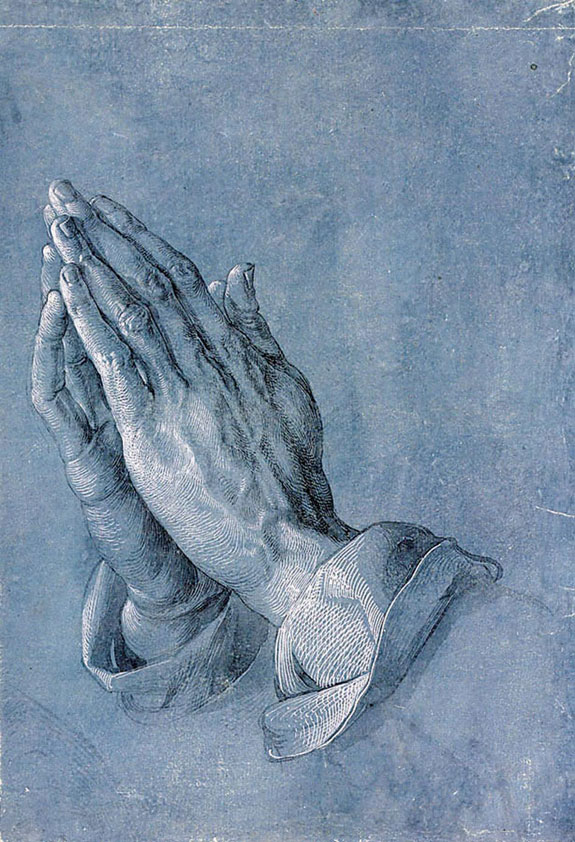
We must decide if faith has relevance in these digital days, our modern minds, our computerized lives.
As every religion mixes universal truths with local peculiarities we must lift out the former from the latter and embrace that which speaks to what is generically human in us all.
This is not easy for the irreverent, for religion is rich in rites and laden in legends.
This is not simple for those whose lives are reigned by rationalism, for the claim that the universal principles of faith are more important than rites and rituals is like contending that the trunk of a tree is more important than the branches, leaves or roots of that tree.
I know that when I seek to understand the religious impulse, that I myself lack, this is akin to trying to comprehend the incomprehensible.
The mind that is mine struggles to grasp how Hindu’s holy Kali Temple in Calcutta revers two million cows to the point of nuisance while fakirs offer their bodies to bedbugs as sacrifice.

I find myself conflicted between the stillness of Bethlehem and department stores blaring “Silent Night” from stereos above plastic reindeer and overweight Santas.

I seek to define the divine amidst images of crucified Christs and chocolate bunnies and Easter eggs.

I wallow in a mire of confusion as to how Crusades can be Christian or Jihads holy, or how a God of love co-exists with witch slaughter in Salem, monkey trials in Tennessee and Grand Inquisitions in Spain.

I, like billions before me and aeons after me, seek the meaning to my existence in the hope that my short span of life has worth.
I am reminded of a Faustian fable of a man who climbed to the top of a mountain and seized hold of the Truth.
Satan, suspecting sedition from this mortal upstart, directed a demon to tail the determined seeker.
When the demon reported with alarm the man’s success, Satan was not in the least bothered by the bulletin.
“Don’t worry.“, Satan yawned.
“I will tempt him to institutionalize the Truth.”

The empowering theological and metaphysical truth of faith is inspirational, but the religious institutions built around this truth are often not.
Religion is constituted of people with their inbuilt frailities, vices and virtues.
When the vices get compounded by masses, the results are horrifying to the point where one might suggest that faith should be left outside the hands of humanity.
But faith without the faithful would have left no mark upon humanity’s history, for better or for worse.
Had faith remained as only aloof disembodied insight and had not embraced institutions and rituals, then faith could not have established traction on history or upon men’s souls.
What is important is to not get lost in the smoke and ceremony of rite and ritual, but instead we need to sift religion for the truths they try to preserve, the wisdom that maintains our world.

As T.S. Eliot so wisely phrased it:
“Where is the knowledge that is lost in information?
Where is the wisdom that is lost in knowledge?”
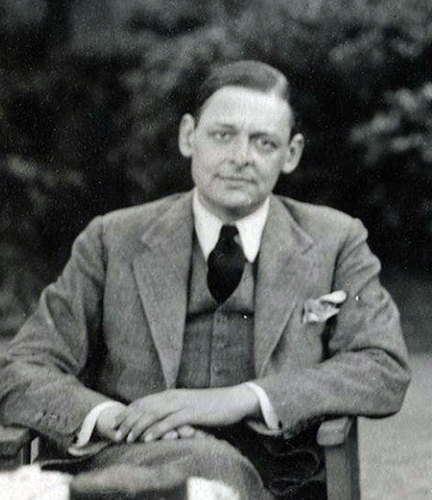
Above: Thomas Stearns Eliot (1888 – 1965)
I categorically reject the premise that one religion is superior to another, for it is this comparison that is the most odious aspect of all institutions, for, as Arnold Toynbee observed:
“There is no one alive today who knows enough to say with confidence whether one religion has been greater than all others.”

Above: Arnold Toynbee (1852 – 1883)
It must be admitted that though I seek to embrace the world, I am incorrigibly myself and I know that the tale I am about to tell might be quite differently written had I been a Burmese Buddhist, a Turkish Muslim, a Nepalese Hindu, a Serbian Orthodox, a Swiss Catholic or a Polish Jew instead of a Canadian humanist with delusions of fluency.

We live in a world of wonders.
Lands across the planet are our neighbours, China is around the corner, the Middle East is our backyard, my younger colleagues and close companions with backpacks go everywhere, while I – who often remain at home in this wee hamlet of Landschlacht – have access to an endless parade of books and videos and visitors from abroad.
It isn’t so much that East meets West as it is humanity is being flung at one another, hurled across distances at jet speed, information invading our impatient intelligence within the breath between atoms.

Diogenes, twenty-five hundred years ago, exclaimed:
“I am not an Athenian or a Greek but a citizen of the world.”

Above: Diogenes (412 – 323 BC)
Today we have the possibility to not only think of ourselves by the nations we found ourselves born in, but rather we have the opportunity to judge our heartbeat by the pulse of the planet.
We need to understand the faiths of others if we are to meet them as allies or antagonists, so that we can avoid military engagement through diplomacy.
We need to understand one another through our faiths so we can enjoy the world vision it offers us.

Or put another way….
What do they know of England, who only England know?

How can we truly understand our beliefs if we never question them by comparison with others?
How truly enriching our lives become when we truly understand what belonging means to the Japanese, to sense with a Burmese grandmother what passes in life and what endures, to comprehend with the Hindu that our personalities mask the Infinite within, to follow the paradox of a Zen monk who assures you that everything is sacred but refrains from acts that are unholy, to feel the comfort that confession offers the devout Catholic….
For as language opens the mind to understanding other people, faith enlarges the heart to compassion and love for humanity.
True faith, not a dull habit but a living passion, confronts the individual with the momentous wisdom that life can offer.
Faith calls a soul to the highest adventure, a journey across the landscape of the human spirit.
It is the siren call to confront reality as it is, to master the self.
It is a lonely journey, a personal quest….
“A sharpened edge of a razor, hard to traverse,
A difficult path is this – the poets declare!”
(Alfred Toynbee, Civilization on Trial)

Los Alamos, New Mexico, 16 July 1945
Today is the day that the chain reaction of scientific discoveries that began at the University of Chicago and focused here at Site Y has reached the final culmination.

No one has been more instrumental in this project’s achievement than the director of the Los Alamos Project, Robert Oppenheimer.
All eyes are upon him closely this morning.

Above: Robert Oppenheimer (1904 – 1967)
“He grew tenser as the last seconds ticked off.
He scarcely breathed.
He held on to a post to steady himself.
When the announcer shouted “Now!”, there came this tremendous burst of light, followed by the deep-growling roar of the explosion, his face relaxed in an expression of tremendous relief.”
The first atomic bomb is a success.

What flashed through Oppenheimer’s mind during those moments were two lines from the Bhagavad-Gita in which the speaker is God:
“I am become Death, the shatterer of worlds;
Waiting that hour that ripens to their doom.”

(The Bhagavad Gita is a discourse between Krishna and Arjuna set in a chariot at the start of the Mahabharata War.)
Thus began an age in which violence and peace continue to confront each other more fatefully than ever before.
In India, Gandhi’s name became, in the middle of the 20th century, the counterpoint to those of Stalin and Hitler, but not just for the British withdrawl from the Subcontinent in peace, but, more importantly, for his lowering a barrier even more formidable than that of race in America.
Gandhi renamed India’s untouchables harijan – God’s people – and raised them to human stature.
In doing so, Gandhi provided the non-violent strategy and the inspiration for Dr. Martin Luther King, Jr.’s civil rights movement in the United States.
Gandhi’s inspiration was revealed in his autobiography:
“Such power as I possess for working in the political field has derived from my experiments in the spiritual field.
Truth is the sovereign principle and the Bhagavad-Gita is the book par excellence for the knowledge of truth.”

Above: “Mahatma“(“the Venerable“) Mohandas Gandhi (1869 – 1948)
On a grey day in October 2017, a stone’s throw from the grim North Circular, that drab ring road that encircles London’s northern suburbs of Neasden, I would follow my curiosity and thirst for truth eternal to a Hindu temple.
A temple both alien and appropriate in the homeland of English, in the heart of an empire that once dominated my own birth country of Canada and whose sovereign remains our head of state, from a religion with roots in the land of India – that living coalition of religions and languages where one billion congregate and of which 80% call themselves Hindu – with 30 million adherants dispersed throughout the world.
On that day I would visit the largest traditional Hindu temple outside India (as recognized by Guinness World Records), Neasden’s 8th Wonder of the World, the Crown Jewel of Hinduism, one of Reader’s Digest‘s 70 Wonders of the Modern World, Time Out London‘s Seven Wonders….
The BAPS Shri Swamirayan Mandir Hindu temple.
It would not make me a Hindu nor make me feel any more knowledgeable about Hinduism than I felt before, but, nevertheless, my morning visit left impressions with me that still remain….

London, England, 26 October 2017
Shri Swaminarayan was not my first visit to a Hindu temple (and I have a feeling that it won’t be my last), for on a visit to Singapore in the spring of 2014, en route to the Perth wedding of friends in Western Australia, I visited Sri Mariamman Temple, paradoxically located in the Lion City’s Chinatown district.
Sri Mariamman is the oldest Hindu temple in Singapore and I still remember the temple’s incredible, brightly coloured gopuram (tower) above the entrance, covered in kitsch plaster images of Brahma the Creator, Vishnu the Preserver and (Oppenheimer’s) Shiva the Destroyer, as sacred cow sculptures graze the boundary walls.

I had a three-day stopover in Singapore and in the process of trying to cram so much into my consciousness in a very short time Sri Mariammen is a blurred memory amongst many that I saw during my short sojourn in the city-state.
I recall also seeing the Peranakan Museum, the Raffles Hotel, the Chinatown Heritage Centre, the Buddha Tooth Relic Museum, the Taoist Temple of Heavenly Happiness (Thian Hock Temp), Little India, Changi Prison, the Night Safari, Sentosa Island and Pulau Ubin.
I remember Little India, not for the Sri Veeramakaliamman Temple with images of Kali, wearing a garland of skulls and ripping out the insides of her victims, but rather for the Bismallah Biryani Restaurant’s mutton kebab.
Hindu temples in Singapore were, for me at the time of my visit, only part of a tightly squeezed adventure and a list of must-sees rather than research for right or righteous religion.

(Thinking of Singapore and Perth I see future posts about them….)
I might not have bothered with London’s BAPS Shri Swaminarayan Manhir at all had not my wife purchased for us two London Passes, offering free entry to over 60 attractions, as well as free public transport on buses, tubes and trains, and strongly suggested I use mine as much as possible during the days of the medical conference she would attend that week.
Today would be the first day that I would view London unaccompanied by my spouse during the week.
It was not my first visit to London….

(I had spent a couple of days on my own in 1995, mostly walking along the Thames rather than doing much exploring as a lack of money dogged my days then.
I spent a day and an evening in 2010 with my good friend Iain and his beautiful companion – now his spouse since the aforementioned Perth wedding – Samantha, visiting Greenwich Observatory and seeing the show Avenue Q in the Theatre District, with time to enjoy life walking well and dining fine.)

But this was the first time I would attempt to deliberately explore London on my own without having to worry excessively about money.
I approached the Project alphabetically from the pages of the London Pass Guide.
As the ArcelorMittal Orbit (London’s tallest sculpture), the All Hallows by the Tower Church (where William Penn was baptized, John Quincy Adams was married and Archbishop William Laud was buried), Apsley House (with the oldest surviving grand piano in the UK) and the Arsenal Stadium Tour & Museum – (Football was never so crucial a sport to me as Canadian ice hockey or American baseball.)(Iain, an Everton fan, would never have forgiven me such a sacrilege.) – didn’t strike me as “must-see-before-I-die” / bucket list attractions, BAPS Shri Swaminarayan Manhir seemed the place to start.

And I must admit the attraction was attractively described:
“BAPS Shri Swaminarayan Mandir is a masterpiece of traditional Hindu design and exquisite Indian workmanship in the heart of London.
Using 5,000 tonnes of Italian and Indian marble and the finest Bulgarian limestone, it was hand-carved in India before being assembled in London in just 2.5 years.
Since it opened in 1995, this renowned place of worship has attracted over 400,000 visitors every year.
Come and marvel at the intricate carvings, experience a traditional Hindu prayer ceremony, or learn about the world’s oldest living faith.“

I took the Tube from our hotel’s neighbourhood way out to Stonebridge Park Station and wandered lost for an hour until I reached Neasden in the London Borough of Brent.

It may seem at first thought that Neasden is an unusual spot for a Hindu temple, but then Neasden has always been an unusual spot in its own right.
Neasden’s name meant “nose hill” and referred to the small promontory at the western end of the Dollis Hill Ridge upon which the hamlet sat.
The countryside hamlet land was once owned by St. Paul’s Cathedral and consisted of only several small buildings around a green near the site of the present Neasden roundabout until the mid-19th century.
In 1823 Neasden was no more than a “retired hamlet” with six cottages, four large farms, a pub and a smithy gathered around the green.
The Brent Reservoir (aka the Welsh Harp Reservoir from the name of the aforementioned pub) between Henden and Wembley Park, that straddles the boundary between the Boroughs of Brent and Barnet, was completed in 1835 and was breached in 1841.
The breaking of the dam on the River Brent resulted in folks dying and many fields and meadows under water.
Today the Brent Reservoir is a biological Site of Special Scientific Interest (SSSI) and home to the great crested grebe, the gadwall, the shoveler, the common pochard, the tufted duck and the common tern, as well as eight species of warbler – a total of 253 species of bird life.
As well the Reservoir possesses 31 species of butterfly, 15 species of dragonflies and is also the residence of grey squirrels, red foxes and bats.
In 1960 the Reservoir hosted the Women’s European Rowing Championships.
Today the Welsh Harp Open Space surely sees not only rowboats and sailboats but those of the Hindu faith enjoying the magic of this unglamourous corner of suburban tranquillity.

(Not fishermen though, as fishing is strictly forbidden.)
In 1873 Neasden had a populace of 110 and the horse was the main form of transport.
As London grew, the demand for horses in the capital soared, so in the second half of the 19th century Neasden farms focused on rearing and providing horses for the City.
Town work was exhausting and unhealthy for the horses….

(It ain’t so wonderful for humans either.)
In 1886 the RSPCA formed a committee to set up the Home of Rest for Horses with grounds in Neasden, where, for a small fee, town horses were allowed to graze in the open for a few weeks.
The urbanization of Neasden began with the arrival of the railway.
The first railway running through Neasden was opened for goods traffic in 1868 with passenger services following soon after.
In the 1890s change led to a conscious effort to create a village atmosphere.
At this time, the Spotted Dog became a social centre for local people.
By 1891 Neasden had a population of 930, half of whom lived in the village.
Despite the presence of the village in the west, it was the London end that grew fastest.
In 1893 the Great Central Railway got permission to join up its main line from Nottingham with the Metropolitan.
The Great Central set up a depot south of the line at Neasden and built houses for its workers.

The Great Central village was a “singularly isolated and self-contained community” with its own school and single shop, Branch No. 1 of the North West London Co-operative Society.
It is now part of a conservation area.
There was considerable sporting rivalry between the two railway estates and a football match was played every Good Friday.
By the 1930s the two railways employed over 1,000 men.

Neasden Hospital was built in 1894 and closed in 1986.
Apart from the railways, Neasden was dominated by agriculture until just before the First World War.
In 1911, Neasden’s population had swelled to 2,074.
By 1913, light industry at Church End had spread up Neasden Lane as far as the station.
In the 1920s, the building of the North Circular Road, a main arterial route round London, brought another wave of development.
It opened in 1923.

The 1924 British Empire Exhibition led to road improvements and the introduction of new bus services.
Together with the North Circular Road, it paved the way for a new residential suburb at Neasden.
The last farm in Neasden was built over in 1935.
The Ritz Cinema opened in 1935, and Neasden Shopping Parade was opened in 1936, considered then to be the most up-to-date in the area.
All of Neasden’s older houses were demolished during this period, except for The Grange.
The Spotted Dog was rebuilt in mock-Tudor style.
Industries sprung up in the south of the area, and by 1949, Neasden’s population was over 13,000.
The Post Office Research Station was located nearby in Dollis Hill.

There the Colossus computers, among the world’s first, were built in 1943-1944, and underneath them the Paddock Wartime Cabinet Rooms had been constructed in 1939.


Neasden Power Station, which was built to provide power for the Metropolitan Railway, was closed and demolished in 1968.
The post-war history of Neasden is one of steady decline.
Local traffic congestion problems necessitated the building of an underpass on the North Circular Road that effectively cut Neasden in half and had a disastrous effect on the shopping centre by making pedestrian access to it difficult.
The decline in industry through the 1970s also contributed to the area’s decline.
But nonetheless Neasden has somehow survived, largely due to a succession of vibrant immigrant communities keeping the local economy afloat.
Neasden Depot continues to be the main storage and maintenance depot for the London Underground’s Metropolitan line (and is also used by trains of the Jubilee line).
It is London Underground’s largest depot and as such it is a major local employer.
The Grange Tavern (previously called The Old Spotted Dog) on Neasden Lane was closed in the 1990s and demolished to make way for a block of flats, bringing to an end the inn that had stood there for around two centuries.
Another old pub, The Pantiles, which stood on the North Circular Road was converted into a McDonald’s restaurant.
The Swedish furniture retailer, IKEA opened its second UK outlet in Neasden in 1988.

On 14 July 1993, in an MI5 anti-terrorist operation, a Provisional IRA man was arrested in his car on Crest Road carrying a 20 lb bomb.
It came just over a year after the Staples Corner bombing just over 500 yards away, which devastated the junction.
In 1995, Neasden became the unlikely home of the biggest Hindu temple outside India: the BAPS Shri Swaminarayan Mandir, known locally as the Neasden Temple.
In 2004, the shopping centre area was partially redeveloped by the Council in an effort to reverse its fortunes.
The Grange, which had housed a museum about the people of Brent, was closed by the Council in 2005.
The 2004 redevelopment proved to be unpopular with local businesses, as it changed the layouts of parking, thus forcing customers and local trade to pass by due to the parking restrictions of the redevelopment.
Neasden was once nicknamed “the loneliest village in London” and “God’s own borough“.
Neasden has achieved considerable notoriety thanks to the British satirical magazine, Private Eye.
Since early in its history (when the magazine was actually printed in Neasden) the magazine has used Neasden as an exemplar of the suburban environment in pieces parodying current events, personalities, and social mores (for example, the University of Neasden).
Spoof sports reports in the magazine usually feature the perennially unsuccessful football team, Neasden F.C. with their manager, “ashen-faced” Ron Knee and their only two supporters, Sid and Doris Bonkers.
Neasden was one of the locations in the TV documentary Metro-land.
In it, Sir John Betjeman described Neasden as “home of the gnome and the average citizen” (the former a reference to the preponderance of gnome statuettes in suburban front gardens, but possibly also a nod in the direction of the Eye’s fictional proprietor, Lord Gnome).
Background music was provided by William Rushton’s recording of Neasden (1972):
(“Neasden
You won’t be sorry that you breezed in.“)
In a celebrated spoof of the Early Music phenomenon which grew enormously in the late 1960s, Neasden was selected by BBC Radiophonic Workshop composer David Cain as the home of a fictional ensemble dedicated to historically-informed performances on authentic musical instruments from an indeterminate number of centuries ago.
It was thus that in 1968, listeners to BBC Radio 3 were given a recital by the Schola Polyphonica Neasdeniensis whose members performed on the equally fictional Shagbut, Minikin and Flemish Clackett.
Athletico Neasden was an amateur football team of mostly Jewish players, which played in the Maccabi (Southern) Football League in the 1970s and 1980s and were named after the place, though they didn’t actually play in the area.
The team eventually merged with North West Warriors to form North West Neasden.
David Sutherland’s children’s novel A Black Hole in Neasden reveals a gateway to another planet in a Neasden back garden.
Diana Evans’s 2006 novel 26a details the experiences of twin girls of Nigerian and British descent growing up in Neasden.
Willie Hamilton reported in ‘My Queen and I‘ that the Victorian Order medals were made on a production line in Neasden from used railway lines.
A pirate radio station, Dread Broadcasting Corporation, credited as Britain’s first black music radio station, was broadcast from a Neasden garden between 1981 – 1984.
In the Dangermouse episode “Planet of the Machines“, Dangermouse and Penfold arrive back in Neasden from the planet in the Baron’s space time machine.
Konnie Huq and Matt Cooke from BBC TV present the Your News programme from Neasden.
So all of this begs the question:
What in the name of Krishna is a Hindu temple doing here?

Perhaps there is wisdom to be found in the old Hindu proverb:
“The lotus blooms in splendour, but its roots lie in the dirt.”
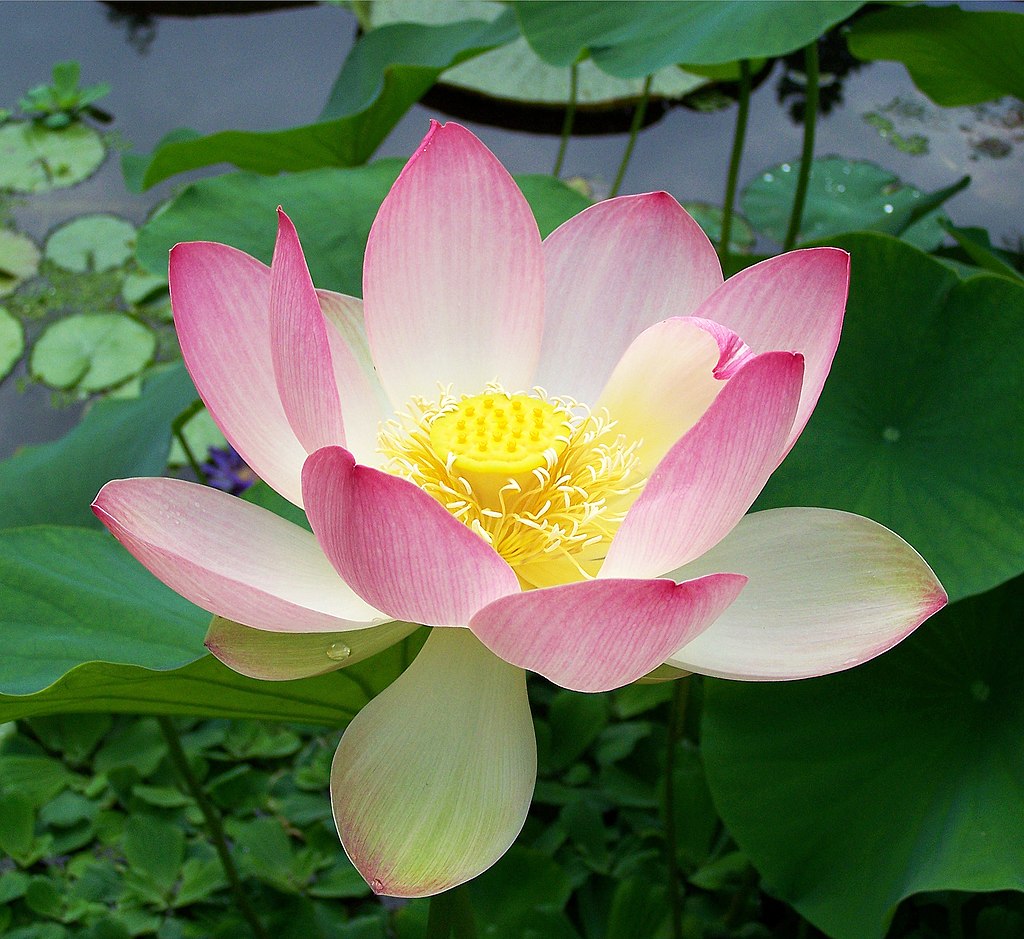
Let me be frank.
Neasden is a glum place, especially after the glamour of the City has been seen, thus the Shri Swaminarayan Mandir seems to rise majestically above the dismal, between-the-world-wars housing like a welcome oasis of sight.
So sudden and grandiose does the Mandir appear that the viewer wonders whether it is a mirage, a shimmering dream, conjured up by one’s overactive imagination.
Here in London’s loneliest village is an experience of India’s glorious tradition and faith, a legacy that seems to have evolved over millennia rather than appearing miraculously on the landscape in a mere 30 months.
Since the Mandir opened in 1995, this renowned place of worship has attracted over half a million visitors a year.
The inventory of visitors, including your humble blogger, has incorporated prime ministers and presidents, royalty and religious leaders, artists and industrialists, school children and journalists, the devout and the merely curious.
It is impossible to catalogue all the appelations, emotions, inspirations and experiences that this Mandir has evoked.
On a personal profound level, the Mandir is a pavilion of peace and promise, a dissolver of disquiet, a messenger dispelling misunderstanding, a statement of hope and faith for the future.
I am fascinated by the power of belief and teamwork and the spirit of volunteerism that made the Mandir possible.
In June 1970, the first BAPS Mandir in Britain opened in a converted disused church in Islington, North London, by Yogji Maharaj.
In 1982, having outgrown the Islington temple, the congregation moved to a small former warehouse in Neasden.
The present Mandir was designed by Pramukh Swami, a 92-year-old Indian sadhu (holy man) and is made of 2,828 tonnes of Bulgarian limestone and 2,000 tonnes of Italian marble, which was first shipped to India to be carved by a team of 1,526 sculptors.

Above: Pramukh Swami (1921 – 2016)
It was built and funded entirely by the Hindu community.
The entire project took five years, although the Neasden construction itself was completed in a mere 30 months.
In November 1992, the temple recorded the largest concrete pour in the United Kingdom, when 4,500 tons were put down in 24 hours to create a foundation mat 1.8 metres / 6 feet thick.
The first stone was laid in June 1993.
Two years later, the Mandir was complete.
Designed according to the Shilpa-Shastras, a Vedic text that develops Hindu architecture to metaphorically represent the different attributes of God, it was constructed almost entirely from Indian marble, Italian marble, Sardinian granite and Bulgarian limestone.
No iron or steel was used in the construction, a unique feature for a modern building in the UK.
From the conceptual design and vision of Pramukh Swami, the architect C. B. Sompura and his team created the Mandir entirely from stone.
It is a shikharbaddha (or pinnacled) mandir:
Seven-tiered pinnacles topped by golden spires crowd the roofline, complemented by five ribbed domes.
The temple is noted for its profusely carved cantilevered central dome.
Inside, serpentine ribbons of stone link the columns into arches, creating a sense of levitation.
Light cream Vartza limestone from Bulgaria was chosen for the exterior, and for the interior, Italian Carrara marble supplemented by Indian Ambaji marble.
The Bulgarian and Italian stone were shipped to the port of Kandla in Gujarat, where most of the carving was eventually completed, by over 1,500 craftsmen in a workshop specially set up for the project.
More than 26,300 individually numbered stones pieces were shipped back to London and the building was assembled like a giant three-dimensional jigsaw.
The Mandir was inaugurated on 20 August 1995 by Pramukh Swami Maharaj, the spiritual leader of BAPS – the organisation behind the temple.
The entire Mandir complex represents an act of faith and collective effort.
Inspired by Pramukh Swami Maharaj, more than 1,000 volunteers worked on the building, and many more contributed and solicited donations, or organised sponsored walks and other activities.
Children raised money by collecting aluminium cans and foil for recycling – the biggest can collection in English history – 7 million cans collected by 1,500 children.
The Mandir serves as the centre of worship.
Directly beneath each of the seven pinnacles seen from the outside is a shrine.
Each of these seven shrines houses murtis (sacred images) within altars.
Each murti is revered like God in person and devoutly attended to each day by the sadhus (monks) who live in the temple ashram.
Beneath the Mandir is the permanent exhibition ‘Understanding Hinduism‘.
Through 3-D dioramas, paintings, tableaux and traditional craftwork, it provides an insight into the wisdom and values of Hinduism.
Visitors can learn about the origin, beliefs and contribution of Hindu seers, and how this ancient religion is being practised today through traditions, such as the BAPS Swaminarayan Sampraday.
The Mandir is open to people of all faiths and none.
Entrance is free, except to the ‘Understanding Hinduism‘ exhibition where there is a £2 fee, which was covered by the London Pass.

(A note about BAPS….
Bochasanwasi Akshar Purushottam Sanstha (BAPS) (Bocāsanvāsī Akshar Purushottam Sansthā) is a Hindu religious and social organization within the Swaminarayan branch of Hinduism.
BAPS was established on 5 June 1907 by Shastriji Maharaj after leaving the Vadtal Gadi of the Swaminarayan Sampraday.
It was formed on the founder’s interpretation that Swaminarayan was to remain present on Earth through a lineage of Gunatit Gurus (or Akshar) dating all the way back to Gunatitanand Swami – one of Swaminarayan’s prominent devotees.
Gunatitanand Swami was succeeded by Bhagatji Maharaj, Shastriji Maharaj, Yogiji Maharaj, Pramukh Swami Maharaj and Mahant Swami Maharaj.
Due to the organizational emphasis on the Akshar Purushottam doctrine, it essentially forms the organization’s middle name.
The fundamental beliefs of BAPS include the spiritual guidance through the living Akshar (or Guru) who is believed to have attained oneness with Swaminarayan.
Mahant Swami Maharaj is the current Guru and the president of the organization.
As a global, well-established Hindu organization, BAPS actively engages in a range of endeavors aimed at spirituality, character-building, and human welfare.
The activities span religious, cultural, social, and humanitarian domains.
Through these activities, it aims to preserve Indian culture, ideals of Hindu faith, family unity, selfless service, interfaith harmony and peaceful coexistence.
55,000 volunteers and 3,300 temples serve 3,300 communities around the world.
As of August 2018, BAPS has approximately 1,560 saints (or sadhus), among the most saints in one sanstha in Hinduism.
As part of its efforts towards community outreach, BAPS also engages in a host of humanitarian and charitable endeavors, by which its volunteers serve neighbors and communities.
With total assets of 17.5 billion USD, BAPS is able to contribute to a lot of welfare and public service works.
Through BAPS Charities, a non-profit aid organization, BAPS has spearheaded a number of projects around the world in the arenas of healthcare, education, environmental causes and community-building campaigns.)

For the Hindu community, the Mandir is a unifying force that installs pride and dignity with a zeal to serve society.
Every week, hundreds of faithful devotees, young and old alike, gather for prayers and services.
The annual Diwali and New Year’s festivals are witnessed by thousands of devotees and well-wishers.
Diwali is a spectacular celebration that falls in the month of November, a festival of lights and fireworks that celebrates the triumph of good over evil.
Every year 35,000 children visit the Mandir.
What exactly is a Mandir, you ask?
A Mandir is a Hindu place of worship, literally a place where the mind becomes still and the soul floats freely to seek the source of life, bliss and meaning, a place to pause for a moment to pray, reflect and absorb the peaceful ambiance.

The problem is that the Mandir is a place that takes religion seriously, and though it is listed as a tourist attraction, the Mandir is anything but one.
Here, there is no pandering to curiosity seekers.
It is not a place to go rifling through the Hindu faith to light on what has shock value, for the focus on what is bizarre and outside one’s experience is the crudest kind of vulgarization of faith.
Behind the ceremony and ritual, we seek what is of deepest concern to ourselves, that search for the essential similarity in human nature.
Hinduism is, like true faith, like other religions, not a dull habit but a raging fever, a pounding pulse that gives its adherants all that is startling about life itself.
The Mandir in the suburbs of Neasden is as unbelievable to the eyes as a garden in the Sahara.
This spectacular edifice, this the largest Hindu temple outside India, includes seven spires (shikhars), six domes, 193 pillars and 55 different ceiling designs.
The Mandir‘s visual splendour and tranquil atmosphere have spontaneously generated poetic expressions and sentiments.
The media have dubbed the Mandir as “hallucinogenic” and described the profuse carvings as “frothy milk on a cappuccino“.
Deities and motifs representing the Hindu faith spring from the ceilings, walls and windows.
The impressive monument is supported by a 1,070-foot long pageant of extraordinary stone elephants and a 610-foot long ornately carved outer wall.
The Narayan Sarovar, a water body that embraces the monument on three sides, gives the Mandir an aura of a traditional place of pilgrimage.
The Mandir is entered through the richly carved portico of the Grand Haveli (cultural complex), welcoming you into a majestic wooden courtyard with soaring teak columns and oak panels.
Elegant peacocks, delicate lotus flowers and royal elephants beckon in greeting, with the carpet designed to compliment the motifs.
Wood for the Haveli was sourced from sustainable forests, and for each tree felled, ten saplings were planted.
The Haveli Prayer Hall is a pillar-less assembly area that measures 2,750 square metres and seats over 2,500 worshippers.
The Hall incorporates environment-friendly features such as light wells, energy-saving lighting and a heat exchanger which uses thermal energy dissipated by the congregation to heat other parts of the complex.
Here is the venue for weekly assemblies and regular festivals.
The heart of the Mandir is its murtis (the sacred images of the deities who are revered as living gods), ritually infused with the presence of the divine.
Hindus worship murtis to express and enhance their loving relationship with that which is holy.
Murtis are the soul of the Mandir, making it a sacred place of worhsip wherein God resides – the home of God.

The shrine’s foundations are His feet, the pillars His knees, the inner sanctum His stomach, the throne His heart, the murti His soul, the shikhars His shoulders, the bell His tongue, the lamp His breath, the lion His nose, the windows His ears, the ringed stone on the shikhar His neck, the golden pot His head and the flags His hair.
The entire Mandir is revered as a divine manifestation.
In total, there are 11 shrines with 17 murtis, including Ganesh, Hanuman and Swaminarayan – this last to whom the Mandir is dedicated.
The murtis are ritually served by dedicated sadhus (monks) who live in the Mandir.
Before sunrise, the murtis are awakened by the sadhus and the shrine doors opened for the first of five daily artis (prayers), the Mangala Arti.

An arti is a ritual wherein a specific prayer is recited to a poetic format with music while the sadhus wave a lighted lamp in front of the murtis.
The sadhus recite some shlokas (prayers), serve the murtis, offer them food and bathe them and close the shrine doors.
Feeding and bathing of the murtis continues throughout the day.
The shrines are opened again for the second aarti, the Shangar Arti, and remain open from 0900 to approximately 1100, when the shrines are closed and offered thal (hymns).
At 1145, the shrines are opened for the midday arti, the Rajbhog Arti, and the thal is recited before the murtis.
The shrines are closed after this to allow the murtis to rest during the afternoon.
The shrines reopen at 1600 until 1830 for darshan.

The Sandhya Arti (sunset arti) follows at 1900.
Thereafter, a selection of prayers are recited by the devotees including dhun (where the names of God are chanted and verses of praise are sung).
The shrines are closed again for approximately one hour so they can be offered their final meal by the sadhus.
The murtis are then prepared for the night and adorned in their evening attire by the sadhus.
The shrines are opened a final time for the Shayan Arti (night-time arti) with the lights dimmed and music lowered.
The devotees recite a few hymns, gently sending the murtis to sleep, before the shrines are finally closed for the night.
The elaborately carved pillars, friezes, ornate ceilings and the magnificent dome provide an aesthetic and elevating atmosphere to the sanctum sanctorum of the Mandir.

The murtis of the Mandir – Bhagwan Swaminarayan, Guru Parampara, the avatars of Sanatan Dharma, Shri Akshar-Purushottam Maharaj, Shri Radha-Krishna, Shri Sita-Ram, Shri Shiv-Parvati, Shri Ganeshji and Shri Hanumanji – exude a heavenly calm and beauty.
Don’t despair if you can’t decipher who is who and what is what, for, to understand all of this, one needs to be steeped in Hindu history and Indian heritage.

Here prayers are whispered, songs of praise are heightened and the soul rejoices beyond the frontiers of mundane existence to experience the divine peace of God.
It is a nucleus of socio-spiritual activities for the benefit and elevation of individuals, families and society.
It inspires a society free from violence, crime and addiction.
It infuses people with a spirit of selfless service, to live in tune with God and in harmony with humanity.
Or at least these are the Mandir’s intentions.
An hour of lost and bewildered walking finally led me to a procession of French teenagers who were scrutinized carefully by the burly security that met us.
Here at 105 Brentfield Road, as in most places that devote time and attention to unearthly divinity, apparently God has a strict dress code that must be adhered to before you will be allowed to worship Him.
Clothing must be respectable, respectful.
Shorts and skirts must be below knee-length and footwear removed upon entering the Mandir complex.
No one smokes on the premises.
Video and photography are forbidden upon entry.
Mobile phones must be turned off and no food or beverages are allowed on the premises.
By the time I reach the security shed where backpacks are stored upon long shelves and make my way into the Mandir I am immediately summoned by personnel into the Prayer Hall where row upon row of folding chairs support a large collection of English senior citizens let loose here on this most unusual excursion.
The film is agonizingly long and as I am not officially a part of this senior set, despite the balding pate and silver mane that is mine, I extrude myself as quietly as I can and find myself lining up to enter the Inner Sanctum with the aforementioned French and some Indian devotees.
Hindu worship (puja) involves images (murtis), prayers (mantras) and diagrams of the universe (yantras).
The simplest yantra is a circle within a square within a rectangle, with four gates to represent the four directions of the universe.
Hindu temples are based on this design, although still open to endless additions and variations in decoration.
Central to worship is the icon, or sacred image, which together with the temple, is believed to both house and represent a manifestation of God.
An icon can be worshipped at home or in a temple.
Most Hindu worship at home more often and the majority of Hindu homes have a shrine, where at certain times different members of the family make offerings and say prayers.
Most Hindus worship individually, not in a communal service.
Worship involves mantras (vibrating sounds that summon the murti) and prasad (the offering of gifts).
While many prayers and offerings are made for the fulfillment of wishes, the ultimate objective is the offering of the self to become one with God.
Central to this worship is darshan (seeing and being in the presence of the central murti).
The best time to visit the Mandir is just before 1145, when the rajbhog arti ceremony is performed.
Lit candles are waved in front of the embodiments of the murtis, accompanied by a musical prayer performed by drums, bells, gongs and a conch shell.
It is truly a haunting and uplifting experience.
Abhishek is the ancient Hindu practice of pouring water over the sacred image of God to honour Him and to attain His blessings.
In this Mandir, abhishek of the sacred image of Nilkanth Varni (or Bhagwan Swaminarayan) is performed daily to the chanting of Vedic verses, including the ancient prayer of peace (the Shanti Paath) and the recital of the 108 auspicious and liberating names of Varni (the Janmangal Namavali), in a ceremony that lasts 15 minutes.
The abhishek is done by devotees on days of special significance to them or to seek blessings for personal reasons.

The Abhishek Mandap is a marble chamber on the lower floor of the Mandir, housing the sacred image of Shri Nilkanth Varni, the teenage form of Bhagwan Swaminarayan to whom the Mandir is dedicated.
The chamber is clad in Brazilian and Italian marble and embellished with intricate traditional designs.
At the chamber’s heart lies the murti of Varni in gilded brass.
He is depicted in mid-step, emaciated, yet looking calm and resolute.
With matted hair and a small gutko (handwritten manuscript of excerpts from sacred texts) wrapped in a kerchief around his neck, Varni is wearing nothing but his loincloth tied at the waist by a jute cord.
In his left hand, Varni carries a dand (a wooden staff) and a kamandalu (a drinking pot made from dry gourd), both common marks of Hindu ascetism.
Who was Varni?
After renouncing his home at the tender age of 11, Bhagwan Swaminarayan embarked upon an epic journey of spiritual awakening that took him around India, into Nepal and Tibet, and through Myanmar and Bangladesh.
During this time, he became to be known as Nilkanth Varni.
Barefoot and alone, Nilkanth walked almost 8,000 miles over seven years, blessing the land and liberating numerous spiritual aspirants along the way.
Carrying no maps, no food and no money, Varni crossed raging rivers, faced ferocious animals and survived the freezing heights of the Himalayas.
His solitary journey is a story of courage, kindness and enlightenment, and the inspiration for the naming of the Mandir.

But can the non-believer understand Hinduism?
I have tried and what I have concluded is the following….
Hinduism is the world’s oldest ongoing living religion, practised as early as 6500 BC.
It has, unlike Christianity or Islam, no one single founder, but is rather a collective of experiences of ancient seers over the centuries.
According to Hinduism’s adherents, Hinduism teaches one to see the presence of God in everything and thus honour the whole of creation.
You can find God in the world of everyday affairs as readily as anywhere else.
With this perspective, there are no heathens nor enemies.
Many Hindus acknowledge Christ as a divine man, while believing that there have been many as such, including Rama, Krishna and the Buddha.
Everyone, even Canada Slim your humble blogger, has the right to evolve spiritually and will, at some time, realise the truth.
Hindus believe that souls are not limited to one life – many lives offer many chances for spiritual elevation.

Like many religions, this faith has rigorous rules.
People are responsible for every action they perform, through the Law of Karma.
Hindus believe in one supreme, all-powerful God, the Creator, who has a divine form, is immanent (eternal), transcedent and the grantor of spiritual liberation (moksha).
Jews, Christians and Muslims view the worship of God in the form of one chosen ideal.
Hindus view and represent God in innumerable forms.
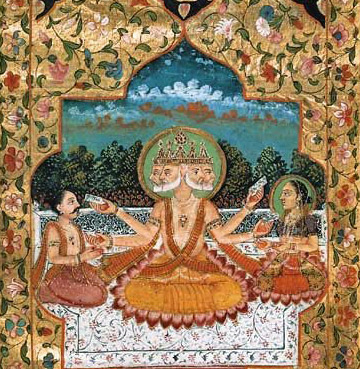
Each form (avatar) is but a symbol that points to something beyond.
No one form can truly encapsulate God’s actual nature, so an entire array is needed to complete the picture of God’s aspects and manifestations.
Each representation’s vocation is to introduce the human heart to what it represents but what it itself is not.
Though each representation points equally to God, the Hindu devotee tends to form a lifetime attachment to one, the ishta, the form of the divine the devotee wishes to adopt.
This worship of sacred images of God is called murti puja.
After all, love assumes different nuances according to the relationship involved.
Hindus believe in Karma that the soul reaps fruit – good or bad – which is experienced either in this life or in future lives.
They believe in reincarnation (punar-janma), that the soul is immortal, repeatedly born and reborn in one of millions of lifeforms until it attains spiritual liberation (moksha).
Moksha is the release of the soul from this perpetual cycle of births and deaths, remaining eternally in the blissful presence of God.

Dharma is how we choose to live our lives according to divine law, which values service, sacrifice, humility, duty, devotion, purpose, fidelity, respect and integrity among other positive practices and virtues.
This divine law is believed to be revealed by the authority of the Vedic scriptures, the four Vedas – the Samhita, the Brahmana, the Aranyaka and the Upanishad.
And in a model of efficiency these are encapsulated in the Shikshapatri, a book of moral conduct in 212 succinct Sanskrit verses.

In a nutshell of simplicity:
- Do not steal.
- Do not eat meat.
- Do not consume alcohol or other intoxicants.
- Do not commit adultery.
- Maintain purity of conduct.
Hindus claim a proud heritage:
- the world’s first university (700 BC), Takshashila, India
- the invention of the Zero, which makes the binary system and computers possible
- the invention of the decimal system
- the invention of geometry and trigonometry
- the value of pi – the ratio of the circumference and diameter of a circle
- the prior formulation of the Pythagorean Theorem (which says that the square of the hypotenuse of a right-angled triangle equals the sum of the square of the two sides) (For me, mathematics is as arcane and mysterious as faith.)
- a theory of the revolution of the Earth 1,000 years before Copernicus
- a formulation of the law of gravity 1,200 years before Newton
- an idea of the smallest and largest measures of time from a kratl (34,000th of a second) to a kalpa (4.32 billion years)
- the practice of surgery 2,600 years ago with 125 types of surgical instruments for 300 different operations
I did not leave the Mandir of London as a convert to Hinduism, but what my visit showed me was worth the effort.
Life holds more than what one is experiencing now.
People need to live for something which makes life worthwhile, a quest for meaning and value beyond oneself.
Life holds other possibilities beyond our own experience.
Hinduism holds that underlying the human self and animating it is a reservoir of being that never dies, is never exhausted and is unrestricted in consciousness and bliss.
Hinduism sees the mind’s hidden continents as stretching to infinity, infinite in being, infinite in awareness, infinite in joy.
Hindus believe that there are multiple paths to God, each calling for a distinctive mode of travel, each starting from the kind of person one is.
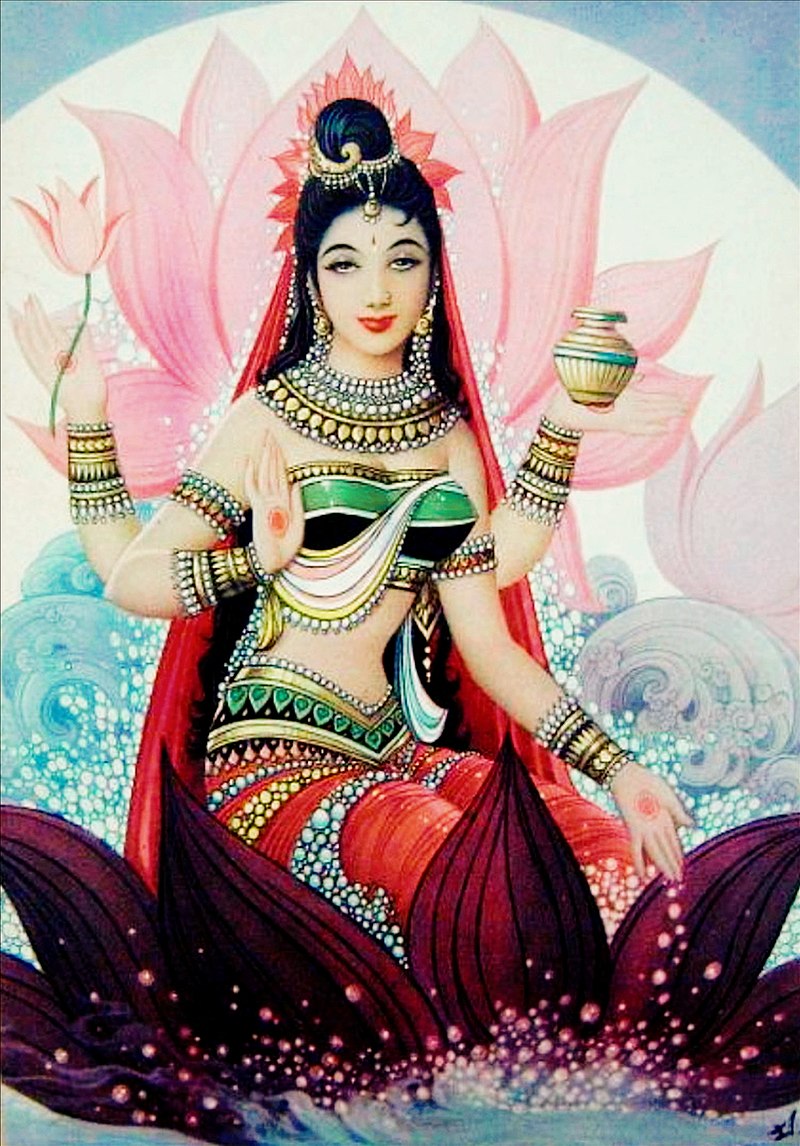
We all play the roles our personalities dictate, cast in this moment in the greatest of all tragi-comedies, the drama of life itself in which we are all simultaneously co-authors and actors, powered less by reason than by emotion.
To find meaning in this drama, in the mystery of existence, is life’s final and fascinating challenge.
Life is a training ground for the human spirit.
The world is the soul’s gymnasium, both a school and a training field.
Hindus believe that the world is lila, God’s plan, that the goal of life is life itself.
The various major religions are alternate paths to the same goal to find meaning to our lives beyond ourselves.
The various religions are but different languages through which God, should God exist, speaks to the human heart.
“Truth is one.
Sages call truth by different names.”
Differences in culture, history, geography and temperament all make for diverse starting points.
Is life not more interesting as a result of its infinite variety in endless combinations?
I may not always understand that which is out of my experience, but the benefits of trying to go beyond my experience are boundless.
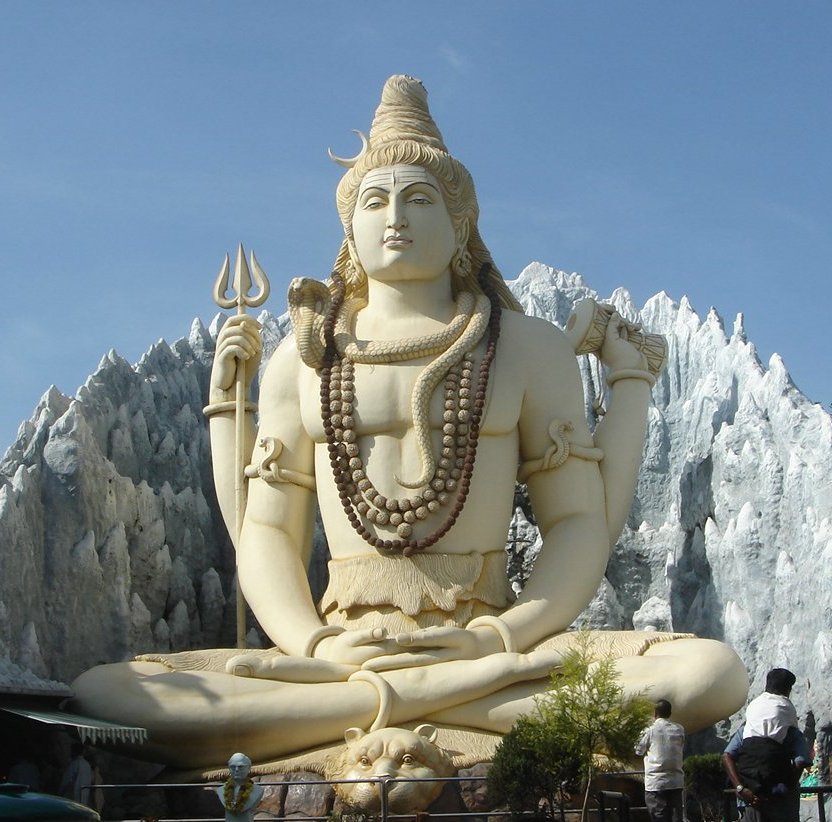
Sources: Wikipedia / Google / Understanding Hinduism Exhibition Guidebook, BAPS Shri Swaminarayan Mandir / John Bowker, World Religions: The Great Faiths Explored and Explained / Rachel Howard and Bill Nash, Secret London: An Unusual Guide / Huston Smith, The World’s Religions / The Bhagavad-Gita

















